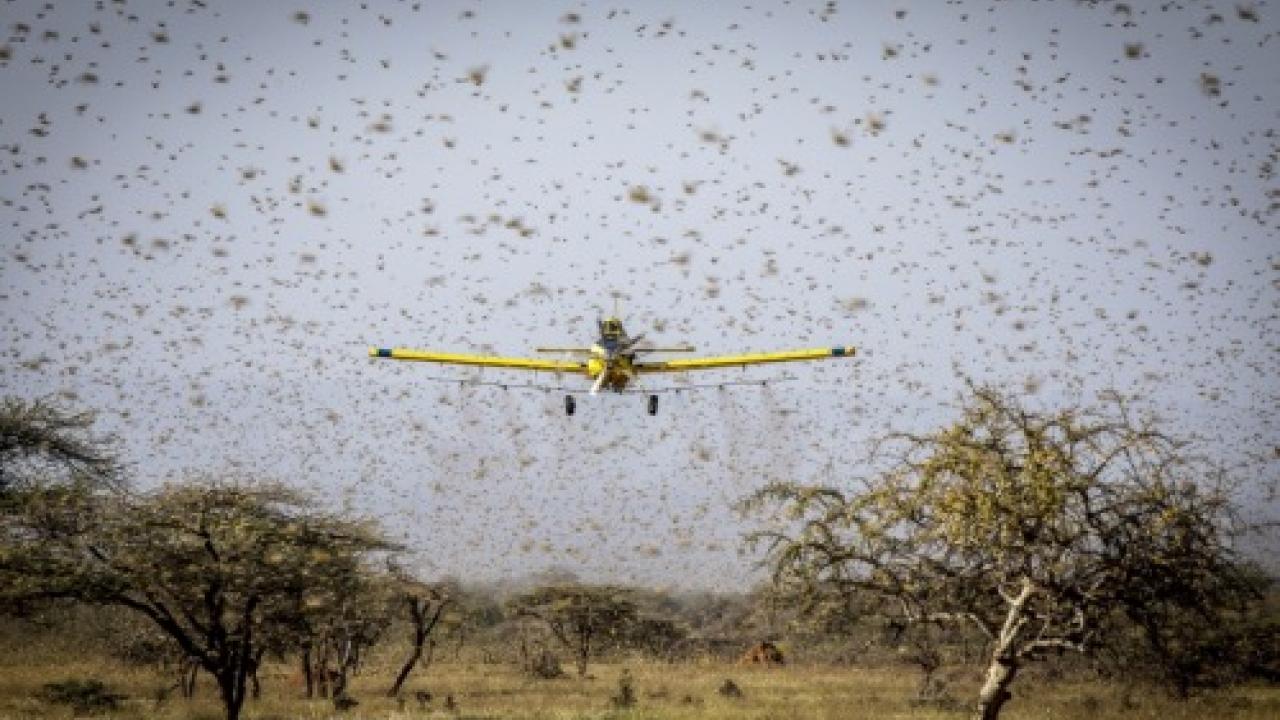Locust fighting force plagued by lack of cash
A huge crisis is looming in east Africa as vital funding for the aircraft operations tackling huge swarms of locusts is drying up. Oscar Nkala reports.

Increasing concern: With climate change causing more extreme weather patterns, locust outbreaks are on the increase. It is vital to make sure that countries have the right tools, technology and information in place. Picture: FAO, Sven Torfinn.
The United Nations Food and Agriculture Organization (FAO) says the 28 aircraft deployed to destroy swarms of locusts in east Africa will be grounded this spring when funding to sustain operations dries up.
In a statement, the FAO said that without the $33.8 million needed in additional funding for fuel, airtime, and pilot hours, all 28 aircraft will stop patrolling the skies to spot and spray locusts.
The grounding would be a huge setback to fighting and mitigating the impacts of the east African locust problem, which began in January last year and remains a threat to food security in Kenya, Somalia, Eritrea, Ethiopia and Tanzania.
FAO deputy director-general, Laurent Thomas, said it would be “tragic” if all the progress made since January 2020 was lost.
“The locust fighting machine that has been assembled in east Africa is now fully equipped and able to contain, suppress, and eventually end this record-breaking upsurge (in locust swarms). Governments have built up capacity in record time. Swarms have been massively reduced in size and number.
“It would be tragic to throw away these achievements just as east African nations are beginning to see the light at the end of the tunnel. There is a real possibility they will bring this upsurge to an end this year, but they need to continue without faltering,” he said.
Since January 2020, the ‘locust air force’ has cleared birds and treated moreb than 1.5 million hectares of land in east Africa and Yemen.
According to FAO estimates, more than 6,000 sorties have been flown to detect and spray infestations. The aircraft have been fitted with digital tools, satellite imaging, and artificial intelligence systems to improve detection and identification of infestations.
The fleet of 28 fixed and rotary-wing aircraft is supported by 260 ground control units and 3,000 spotters and control operators.
Meanwhile, Chinese automated agricultural drone manufacturer, XAG, is touting its XAG agricultural drone as a much cheaper and cost-effective solution to the locust threat.
XAG Africa representative, Fraser Zhang, said the drone, which is now available in three versions, is a much more economical and effective option when compared to manned aircraft and manual spraying means.
“Drones provide an innovative and cheap solution when compared to expensive, manned, flight operations and the even less effective manual spraying methods,” he said. “Drones can be used to provide ultra-low-volume (ULV) precision spraying of chemicals or biological pesticides to kill locust swarms in areas otherwise inaccessible to ground vehicles and other types of aircraft.”
He said the XAG agricultural drone had the added advantage of night operability that included night vision systems designed to detect, identify, and conduct precision spraying on locust swarms.
“During the day, locust swarms spread and fly over extensive areas and stay mobile. That makes daytime spraying less effective. However, during the night, the locusts sleep in large colonies that can be accurately identified and sprayed,” Zhang said.
The XAG agricultural drone has been successfully tested in day and night operations against locusts in Uganda, Zambia and Tanzania.
In the past few years, it has also been deployed successfully in chemical spraying operations over sugar cane fields in South Africa and for grass seeding operations in areas scorched by the Australian wildfires of 2019.
In December, the company unveiled three advanced models of the XAG, including the XAG P40 and the XAG P80. Both are equipped with the SuperX intelligent control system, which allows for switching between three payloads.
Stay up to date
Subscribe to the free Times Aerospace newsletter and receive the latest content every week. We'll never share your email address.

